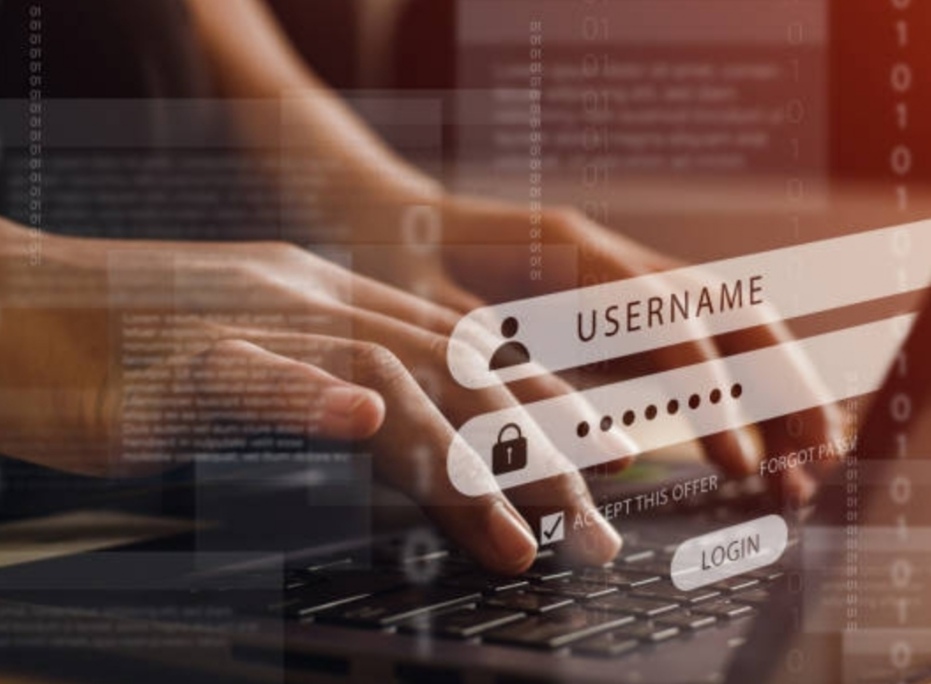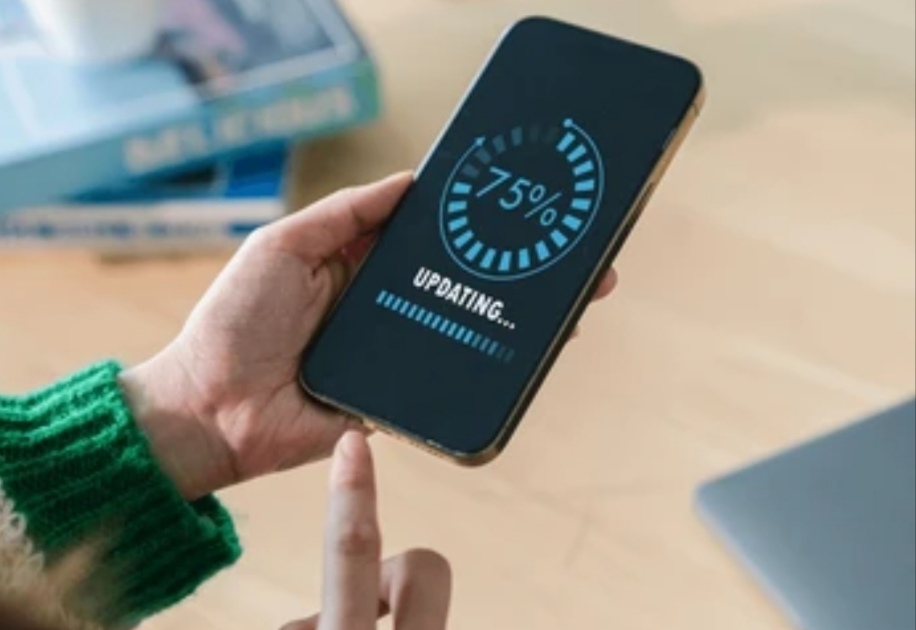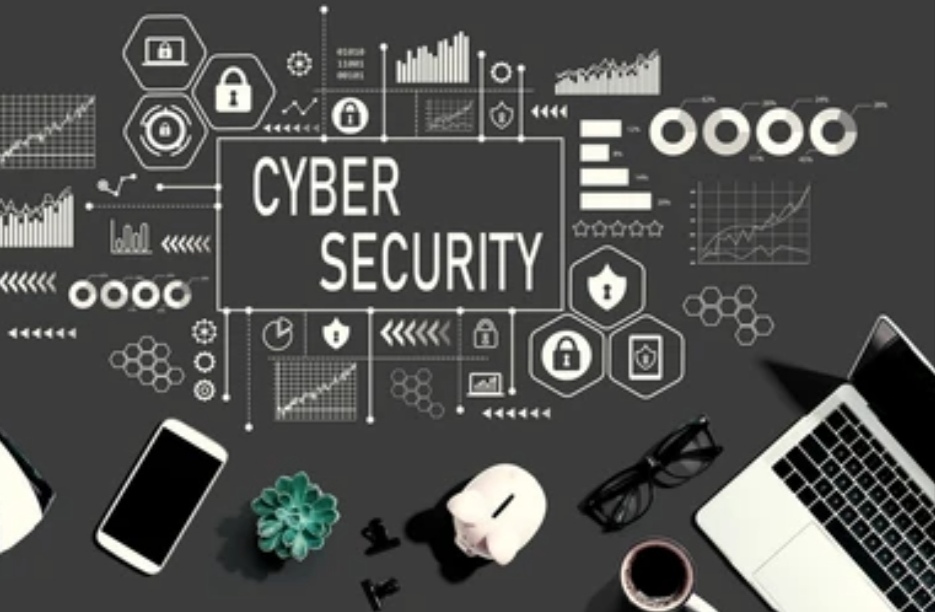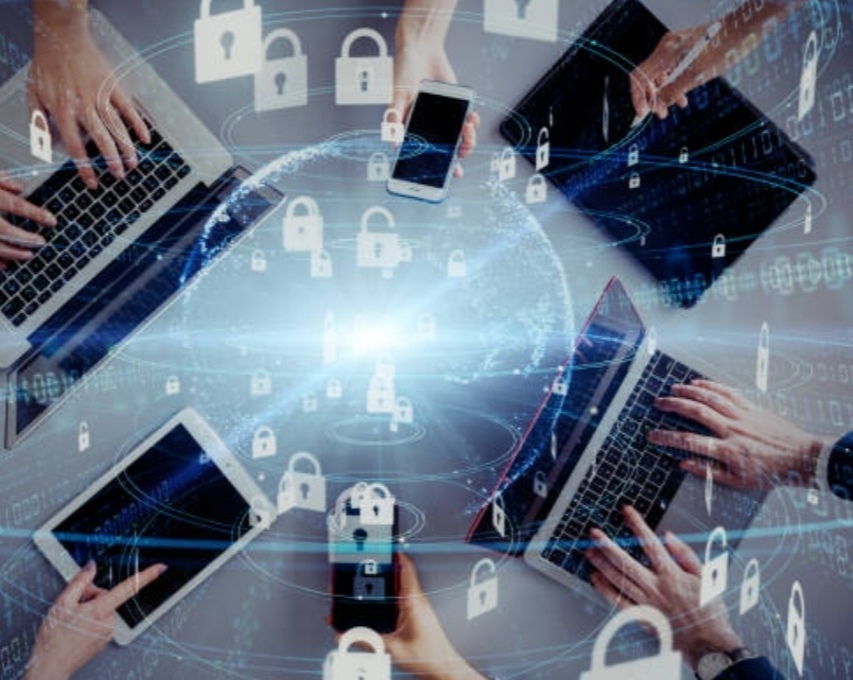How to Keep Your Gadgets Safe: Essential Tips for Every User
In today’s fast-paced digital age, our gadgets have become indispensable tools in daily life. Smartphones, laptops, tablets, and smartwatches store everything from personal memories to sensitive financial details.
They help us stay connected, complete tasks efficiently, and even entertain us. But as their importance grows, so does the risk of losing them to physical damage, theft, or cyber threats. This is why understanding how to keep your gadgets safe is no longer optional—it’s a necessity.
When we talk about keeping gadgets safe, it’s not just about preventing scratches or ensuring your screen doesn’t crack. It’s also about protecting the treasure trove of personal data these devices hold.
Losing access to this information or having it fall into the wrong hands can lead to identity theft, financial losses, or even personal distress. By implementing proactive measures, you can significantly reduce these risks while ensuring your devices remain functional for years to come.
Why Is Gadget Security Important?
Modern devices are more than just tools—they’re extensions of ourselves. Consider this:
- Privacy Risks: From saved passwords to personal photos, your gadget stores critical data that could be exploited if not protected.
- Financial Vulnerabilities: Think about how often you use your phone for mobile banking or online shopping. A compromised device can lead to unauthorized transactions.
- Work Dependencies: For many, gadgets like laptops and tablets are essential for work. A lost or hacked device can mean disrupted projects and lost opportunities.
- Increasing Cyber Threats: With sophisticated hackers targeting personal and professional devices alike, ensuring robust security measures is imperative.
A Dual Approach: Physical and Digital Safety
When it comes to gadget protection, it’s essential to think holistically. This means taking steps to:
- Protect the physical hardware: From using robust cases to avoiding risky environments, these measures ensure the longevity of your device.
- Safeguard digital data: Encrypting files, securing passwords, and using reliable antivirus software are critical in a world rife with cyberattacks.
Whether you’re a tech-savvy individual or someone just starting to explore digital tools, the strategies discussed in this guide will help you stay a step ahead. By the end, you’ll not only know how to keep your gadgets safe but also how to use them with greater confidence and peace of mind.
Building Good Gadget Habits
Keeping your gadgets safe isn’t about adopting complex or expensive solutions—it’s about building smart habits over time. From simple practices like logging out of unused apps to adopting advanced methods like VPNs and encrypted messaging, there are options for everyone. The goal? To strike a balance between convenience and security.
Are You Prepared?
If your answer to that question is hesitant, don’t worry. This guide will walk you through practical steps, answer common questions, and provide expert tips on everything from physical care to data protection. Let’s explore actionable strategies that ensure your gadgets stay safe and functional while guarding your digital footprint.
With a little planning and the right tools, keeping your gadgets safe is easier than you might think. Stay tuned as we dive deeper into actionable tips that every gadget owner can benefit from!
Why Gadget Security Matters
Protecting your gadgets is not just a technical necessity; it’s a cornerstone of living safely and responsibly in the digital era. As our reliance on technology continues to grow, understanding why gadget security matters becomes increasingly important.
Without adequate security measures, you risk losing not just your devices but also access to critical personal and professional information.

The High Stakes of Gadget Security
Every smartphone, tablet, or laptop you own is more than just a piece of hardware; it’s a hub of interconnected data and services. Here’s why gadget security should be a top priority:
- Devices Hold Valuable Data:
Your gadgets are repositories for sensitive data like passwords, personal identification, banking details, and work documents. Without proper security, this information can easily fall into the wrong hands, leading to identity theft or financial fraud. - Cyber Threats Are on the Rise:
Cybercriminals are constantly innovating, using tactics like phishing, malware, and ransomware to exploit vulnerabilities in devices. Without robust defenses, your gadget becomes a potential entry point for hackers. - Physical Theft Can Be Devastating:
Losing your gadget to theft or misplacement isn’t just an inconvenience. Without proper security measures like encryption or remote wiping, thieves could gain access to your personal data. - Digital Dependence is Growing:
From storing photos and videos to managing finances and work tasks, we’ve become heavily reliant on gadgets for nearly every aspect of our lives. This increased dependence means the consequences of losing or compromising a device are higher than ever.
The Dual Importance of Physical and Digital Security
When thinking about how to keep your gadgets safe, it’s essential to address both physical and digital security. Each plays a vital role in ensuring your devices are protected from external threats and internal vulnerabilities:
- Physical Security:
- Use durable cases and screen protectors to prevent accidental damage.
- Avoid leaving your gadgets unattended in public places.
- Label your devices or use tracking software to locate them if they’re lost or stolen.
- Digital Security:
- Regularly update your software to patch vulnerabilities.
- Install antivirus and anti-malware tools to protect against cyber threats.
- Use secure passwords, two-factor authentication (2FA), and VPNs for safer browsing.
Why Proactive Measures Are Essential
Neglecting gadget security often results in reactive measures after an incident occurs—by then, it’s often too late. Here are the benefits of taking a proactive approach:
- Minimizing Risk: Anticipating potential threats allows you to prevent them before they occur. For example, using a strong password manager can thwart hackers attempting to breach your accounts.
- Saving Costs: Protecting your devices upfront with security tools is far cheaper than replacing stolen gadgets or recovering from a data breach.
- Ensuring Longevity: Proper maintenance, both physically and digitally, ensures your gadgets function optimally for longer periods.
How Gadget Security Connects to Your Daily Life
Think about how you interact with your devices daily:
- Logging into email, banking apps, or work platforms.
- Storing family photos and videos.
- Using smart home gadgets like security cameras or voice assistants.
Each of these activities requires your gadgets to be secure. By prioritizing their safety, you ensure your personal data remains private, your finances are protected, and your daily routines aren’t disrupted.
When you understand why gadget security matters, it becomes clear that taking steps to protect your devices is about much more than just avoiding inconvenience—it’s about protecting your lifestyle.
Building Awareness Around Gadget Security
The digital landscape evolves rapidly, and so do the threats. Raising awareness about how to keep your gadgets safe is critical, whether it’s educating yourself or helping friends and family stay informed. Some easy ways to spread awareness include:
- Sharing tips on social media about staying safe online.
- Teaching family members, especially children and elderly relatives, about basic security practices.
- Recommending reliable security tools and services to friends and colleagues.
Final Thoughts
Recognizing the importance of gadget security is the first step toward building a safe and secure digital environment. From safeguarding physical devices to implementing robust digital protections, every measure you take contributes to a more secure, stress-free experience with technology.
Stay tuned as we explore detailed strategies and actionable tips in the sections ahead, ensuring you’ll have all the tools you need to confidently navigate the world of gadget security!
Best Practices for Gadget Security
Keeping your gadgets safe is about adopting a combination of physical and digital security measures. Below are detailed and practical tips to ensure your devices remain protected from threats and function effectively.
These best practices are designed for both novice users and tech-savvy individuals, offering step-by-step guidance on how to keep your gadgets safe in a connected world.

1. Update Software and Apps Regularly
Staying updated is one of the simplest yet most effective ways to secure your gadgets. Software updates often include patches for vulnerabilities that hackers exploit to gain unauthorized access to your devices.
- Why Updates Matter: Developers frequently release updates to fix bugs, enhance features, and improve security. By ignoring updates, you leave your gadgets exposed to known threats.
- Pro Tip: Enable automatic updates on your devices to ensure you’re always running the latest versions. This is especially crucial for operating systems, browsers, and antivirus software.
- Bonus Tip: Schedule updates during downtime to avoid interruptions during work or leisure.
2. Use Strong Passwords and Two-Factor Authentication
A weak password is an open door for hackers. Creating robust passwords and pairing them with Two-Factor Authentication (2FA) significantly boosts your device’s security.
- How to Create Strong Passwords: Use a mix of uppercase and lowercase letters, numbers, and special characters. Avoid predictable choices like “123456” or “password.”
- Why 2FA Is Essential: With 2FA, even if someone cracks your password, they can’t access your account without a second verification step, like a code sent to your phone or email.
- Use a Password Manager: Tools like LastPass or Dashlane can help you generate and store secure passwords effortlessly.
3. Avoid Public Wi-Fi Without a VPN
Public Wi-Fi networks, such as those in coffee shops or airports, are convenient but risky. Hackers often use these networks to intercept data, making it essential to use a Virtual Private Network (VPN) for secure browsing.
- What a VPN Does: A VPN encrypts your internet connection, preventing hackers from intercepting sensitive information like passwords or credit card details.
- Best Practices: Avoid accessing sensitive accounts (like online banking) over public Wi-Fi unless connected to a VPN. Always verify the authenticity of the Wi-Fi network you’re joining.
- Recommended Tools: Consider using trusted VPNs like NordVPN or ExpressVPN for reliable protection.
4. Invest in Physical Protection
Protecting your gadgets physically is just as important as digital security. Accidental drops, spills, or exposure to harsh environments can lead to costly repairs or data loss.
- Use Protective Accessories: Invest in sturdy cases, tempered glass screen protectors, and waterproof covers to shield your gadgets.
- Be Mindful of the Environment: Avoid exposing your devices to extreme heat, cold, or humidity, which can damage internal components.
- Travel Smart: Use padded bags or sleeves to protect laptops and tablets during travel. For added security, label your gadgets with your contact information in case they’re lost.
5. Enable Device Lock Features
Leaving your devices unlocked is like leaving your front door open. Device lock features provide an immediate layer of security, preventing unauthorized access.
- Biometric Locks: Use advanced features like fingerprint scanning or facial recognition for added convenience and security.
- Set a Strong PIN or Password: Ensure your device lock PIN is unique and not easily guessable (avoid using birthdates or repetitive numbers).
- Auto-Lock Settings: Activate auto-lock after a short period of inactivity to prevent unauthorized access when you step away from your device.
6. Backup Your Data Frequently
Data loss can happen unexpectedly due to hardware failures, theft, or malware attacks. Regular backups ensure your important files are recoverable, even in worst-case scenarios.
- Choose the Right Backup Method:
- Cloud Storage: Services like Google Drive, Dropbox, or iCloud offer seamless backup solutions.
- External Drives: Use external hard drives or SSDs for offline backups.
- Automate Backups: Set up automatic backups to avoid forgetting this critical step.
- Test Your Backups: Periodically check that your backups are accessible and not corrupted.
Final Thoughts
Following these best practices is crucial for maintaining both the functionality and security of your gadgets. Whether you’re ensuring software updates, enabling device locks, or using VPNs, each step strengthens your defense against potential threats.
Stay tuned for more in-depth strategies and actionable tips in the next sections to make your gadgets safer than ever!
Tips for Enhancing Data Privacy
Protecting your personal data is just as crucial as securing your devices. Data breaches, identity theft, and privacy invasions are growing concerns in today’s digital age. Below are actionable tips to enhance your data privacy, empowering you with the knowledge of how to keep your gadgets safe and your personal information secure.
1. Encrypt Your Communications
Encryption ensures that your messages and data remain unreadable to unauthorized parties, making it a cornerstone of digital privacy.
- Use Encrypted Messaging Services: Opt for secure platforms like WhatsApp, Signal, or Telegram, which use end-to-end encryption. This ensures only you and the intended recipient can read the messages.
- Encrypt Sensitive Emails: Use privacy-focused email services like ProtonMail or Tutanota. These platforms offer built-in encryption for added security.
- Encrypt Device Storage: Many smartphones and laptops allow you to encrypt your entire device. Enabling this feature ensures that, even if your gadget is lost or stolen, your data cannot be accessed without the encryption key.
2. Limit Data Sharing on Social Media
Oversharing on social media can expose you to cybercriminals and privacy risks. It’s essential to be intentional about what you post and who can view it.
- Avoid Posting Sensitive Information: Refrain from sharing details like your home address, phone number, or vacation plans. Cybercriminals often use such information for phishing or stalking.
- Review Privacy Settings: Platforms like Facebook, Instagram, and LinkedIn allow you to control who can see your posts. Adjust these settings to limit access to your personal updates.
- Think Before Tagging: Avoid tagging locations in real time. Instead, share them after you’ve left to protect your current whereabouts.
- Use Fake Information: For accounts that don’t require accurate personal details (like forums or apps), use pseudonyms or alternate email addresses.
Tip: Regularly audit your social media accounts to remove old, sensitive posts.
3. Be Cautious of Permissions
Apps often request permissions that may not be necessary for their functionality, posing risks to your privacy.
- Review App Permissions: Check which apps have access to your location, camera, microphone, or contacts. For example, does a flashlight app really need access to your contacts?
- Grant Only Necessary Permissions: Deny or limit permissions to essential features. For instance, allow location access only while using an app, not all the time.
- Reassess Periodically: As apps update, they may request additional permissions. Regularly revisit your settings to ensure they align with your privacy preferences.
- Use Privacy-Friendly Apps: Opt for apps that prioritize user privacy. Look for open-source alternatives or apps with strong privacy policies.
4. Secure IoT Devices
The Internet of Things (IoT) connects gadgets like smart speakers, cameras, and thermostats. While convenient, these devices can also introduce vulnerabilities.
- Change Default Passwords: Many IoT devices come with generic factory-set passwords, making them easy targets for hackers. Create unique, strong passwords for each device.
- Update Firmware Regularly: Like apps and software, IoT devices also require updates to patch security vulnerabilities. Enable automatic updates if available.
- Secure Your Network: Connect IoT devices to a separate Wi-Fi network from your primary one. This isolates them in case of a breach.
- Disable Unused Features: Many IoT devices come with features you may not use, like remote access. Disabling these features minimizes security risks.
- Monitor Devices: Use a network monitoring tool to track unusual activity from your IoT devices. This helps detect unauthorized access attempts.
Pro Tip: Invest in a smart home hub that centralizes control and security for all your IoT devices.
Why These Tips Matter
By implementing these strategies, you not only safeguard your gadgets but also take control of your digital footprint. The more proactive you are about data privacy, the better equipped you’ll be to prevent cyber threats and ensure peace of mind.
Proactive Steps for Theft Prevention
Theft is an unfortunate but common risk for gadgets, especially in public spaces or during travel. Taking proactive measures can significantly reduce the likelihood of your gadgets being stolen. Below are effective strategies to safeguard your devices while learning how to keep your gadgets safe from theft.

1. Track Your Devices
Device tracking tools are invaluable for locating lost or stolen gadgets. Leveraging built-in tracking features is one of the simplest yet most effective ways to enhance security.
- Enable Location Tracking: Services like Find My iPhone for Apple devices and Find My Device for Android gadgets allow you to locate your device on a map, even if it’s offline. Ensure these features are always turned on and linked to your account.
- Use Advanced Security Features: Some tools allow you to remotely lock your device, display a message with a contact number, or even erase all data to prevent unauthorized access.
- Third-Party Tracking Apps: Consider apps like Prey Anti-Theft or Cerberus for additional tracking options. These apps provide features such as geo-fencing, alarm triggers, and location history for enhanced security.
2. Label Your Gadgets
While digital tracking is critical, a physical identifier can make a difference in recovering lost or stolen items.
- Add Durable Labels: Use waterproof and tamper-proof labels displaying an email address or alternate contact method. Avoid including sensitive personal information like your phone number or home address.
- Engrave Identification: For high-value items like laptops or tablets, consider engraving your name or an ID number onto the device. This not only deters thieves but also aids in recovery if the device is found.
- Attach Smart Tags: Devices like Apple AirTag or Tile can be attached to gadgets or cases for real-time tracking. These tags pair with your smartphone to help locate misplaced items.
Pro Tip: A visible label often acts as a deterrent to potential thieves, signaling that the device is traceable.
3. Avoid Leaving Devices Unattended
One of the simplest yet most overlooked strategies to prevent theft is keeping your gadgets within sight.
- Use Anti-Theft Bags: Invest in backpacks or laptop bags with anti-theft features such as hidden zippers, lockable compartments, or slash-resistant materials.
- Secure Devices in Public Spaces: In cafes, airports, or co-working spaces, never leave your gadgets unattended. Use a laptop lock to secure your device to a fixed object if you must step away.
- Stay Vigilant During Travel: Gadgets are particularly vulnerable during travel. Keep them in carry-on luggage instead of checked bags, and use RFID-blocking sleeves for devices with sensitive data.
4. Be Discreet About High-Value Gadgets
Displaying expensive gadgets in public can make you a target for theft. Adopting a low-profile approach reduces attention from opportunistic thieves.
- Use Generic Cases: Instead of flashy branded cases, opt for plain covers that conceal the value of your gadgets.
- Avoid Flashy Accessories: Expensive headphones or smartwatches can signal that you’re carrying other high-value items. Consider more modest alternatives in crowded places.
- Limit Usage in Risky Areas: Be cautious about using your devices in areas with high theft rates. If you need to use your phone or laptop, stay alert and choose a secure spot.
Tip: Keeping your gadgets out of sight is often the easiest way to deter theft.
5. Insure Your Gadgets
Even with all precautions, theft can still happen. Having insurance for your gadgets ensures that you won’t face significant financial loss.
- Choose Comprehensive Coverage: Look for insurance plans that cover theft, loss, and accidental damage. Some providers even offer global coverage for frequent travelers.
- Keep Receipts and Serial Numbers: These are often required for insurance claims and help authorities identify your gadget if recovered.
- Consider Extended Warranties: Many manufacturers and third-party vendors offer extended warranties with theft protection. Check for coverage when purchasing your gadgets.
Conclusion
Taking proactive steps to prevent theft not only protects your gadgets but also gives you peace of mind. Combining physical security measures with digital tracking tools ensures your devices remain safe and retrievable. Don’t wait until it’s too late—implement these tips today!
FAQs About Gadget Security
Understanding how to keep your gadgets safe involves addressing common concerns and misconceptions. Here are detailed answers to frequently asked questions about gadget security, offering valuable insights for proactive protection.

What Are the Best Practices for Securing Gadgets?
Securing your gadgets involves a combination of physical safeguards and digital precautions:
- Regular Updates: Keep your software, apps, and firmware updated to patch security vulnerabilities.
- Strong Passwords: Use complex passwords and enable Two-Factor Authentication (2FA) wherever possible.
- Device Lock Features: Utilize biometric authentication like fingerprints or facial recognition to lock your devices.
- Tracking Tools: Activate tracking services to locate lost or stolen gadgets.
How Can I Protect My Gadgets from Online Threats?
Online threats like phishing, malware, and hacking are significant risks. Follow these steps to secure your devices:
- Install Antivirus Software: Reputable antivirus programs provide real-time protection against threats.
- Avoid Suspicious Links: Be cautious of emails or messages containing unknown links.
- Use a VPN: A Virtual Private Network encrypts your internet connection, especially on public Wi-Fi.
Pro Tip: Always back up your data to the cloud or external drives in case of a cyberattack.
What Should I Do If My Device is Stolen?
Acting quickly is crucial when your gadget is stolen:
- Track Your Device: Use tools like Find My iPhone or Google’s Find My Device to locate it.
- Lock the Device Remotely: Use remote locking features to prevent unauthorized access.
- Report the Theft: Notify local authorities and provide them with your device’s serial number or IMEI.
- Erase Data Remotely: If recovery seems unlikely, remotely erase all data to protect your personal information.
Are Public Wi-Fi Networks Safe for Gadgets?
Public Wi-Fi networks are convenient but often insecure. Protect your devices with these tips:
- Avoid Sensitive Transactions: Don’t access bank accounts or enter passwords on public Wi-Fi.
- Enable VPN: Encrypt your connection with a VPN service.
- Turn Off Sharing Features: Disable file sharing and use “Public Network” settings on your device.
Expert Insight: Public Wi-Fi can expose your device to hackers, so always prioritize secure networks.
How Can I Secure Smart Home Devices?
Internet of Things (IoT) devices like smart cameras and thermostats are becoming common targets for cyberattacks. Secure them with these steps:
- Change Default Passwords: Create unique passwords for each device.
- Update Firmware: Keep IoT devices updated with the latest security patches.
- Isolate Networks: Use a separate Wi-Fi network for your IoT gadgets to minimize risks.
- Monitor Traffic: Consider using firewalls or monitoring tools to detect unusual activity.
Is Gadget Insurance Worth It?
Yes, gadget insurance provides peace of mind, especially for high-value devices. It typically covers theft, loss, and accidental damage.
- Evaluate Your Needs: If you frequently travel or use your gadgets in risky environments, insurance is a good investment.
- Check Coverage Terms: Ensure the policy includes theft and international coverage.
- Keep Documentation: Save purchase receipts and record serial numbers for claims.
Pro Tip: Some credit cards offer complimentary gadget protection—review your card benefits for details.
How Often Should I Back Up My Gadgets?
Backing up your gadgets is essential to avoid data loss:
- Frequency: Back up your devices at least once a week, or more frequently if you handle critical data.
- Backup Locations: Use both cloud storage and external drives for redundancy.
- Automated Backups: Enable automatic backup settings to ensure regular updates without manual intervention.
How Can I Teach My Kids About Gadget Security?
Children often lack awareness about device safety, making education crucial:
- Set Rules for Usage: Limit their access to unsafe websites and public networks.
- Teach Password Security: Encourage them to use strong passwords and keep them confidential.
- Monitor Activity: Use parental control apps to track their online behavior.
- Discuss the Risks: Educate them about phishing, malware, and social media oversharing.
Final Thought
Taking proactive measures is the key to ensuring gadget security. From regular updates to theft prevention tools, addressing common concerns allows you to stay ahead of potential risks. Use the insights above to enhance your knowledge and take action today.
Conclusion: Your Ultimate Guide to Gadget Safety
In a world where technology drives nearly every aspect of our daily lives, protecting your gadgets is not just a choice but a necessity. Learning how to keep your gadgets safe ensures that your personal data remains secure, your devices stay functional, and you enjoy uninterrupted connectivity.
The Essentials of Gadget Security
From safeguarding against theft to mitigating cyber threats, we’ve covered all the critical steps to protect your devices. These include:
- Physical Security Measures: Always stay mindful of your surroundings and secure your devices with protective cases and locks.
- Digital Protection: Regularly update software, enable strong passwords, and use antivirus software.
- Tracking and Backup: Keep tracking tools activated and maintain consistent backups to minimize data loss risks.
By implementing these strategies, you’re not only ensuring device longevity but also fortifying your digital footprint against potential risks.
Staying Ahead of Emerging Threats
Technology evolves rapidly, and so do the methods used by cybercriminals. Stay informed about the latest developments in gadget safety to adapt accordingly. Emphasize proactive habits like securing IoT devices, educating family members, and staying cautious online.
This guide has provided actionable insights into how to keep your gadgets safe while offering practical solutions to safeguard against modern threats.
Take Action Today
The best security practices are only effective when applied consistently. Start implementing these steps immediately to secure your devices. Consider investing in reliable tools and services that simplify your efforts, such as trusted VPNs, parental control apps, or insurance plans to cover unexpected losses.
Final Thoughts
Your gadgets are integral to your professional and personal life. Prioritizing their security protects not only the devices themselves but also the sensitive information they store. As threats continue to evolve, so must your approach to gadget safety.
By following the tips and insights shared in this guide, you’ll stay ahead of potential risks, ensuring your devices remain secure and operational. Bookmark this guide and revisit it regularly to refresh your knowledge and stay updated on new trends in digital security.
Empower yourself with the tools and knowledge to protect your devices—start your journey to better gadget security today.
You might also like :

